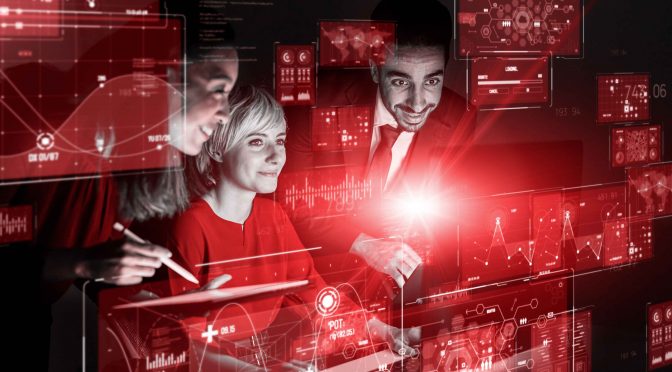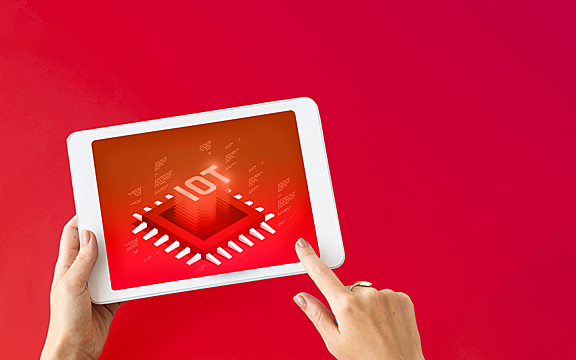Digital transformation is a reality in the various productive sectors and we can no longer fail to implement it internally in our businesses. To this end, it's important for managers to be aware of the technologies that allow it to be incorporated into day-to-day work.
One of the most important and biggest trends, and one that can be implemented in many different sectors, is virtual reality. You've probably seen it applied in the games sector, but it's not just restricted to leisure and can be applied in the business sector. Find out more in this article.
What is virtual reality?
Virtual reality refers to an environment in which it is possible to create a physical reality using technological devices, simulating the real environment using a computer system. It is a totally virtual reality, created artificially, even though it is similar to the real environment.
This gives the user a very realistic perception and can often include tactile sensations in the process. In recent years, this is an area that has grown considerably, with the creation of special glasses and headsets that allow the public to immerse themselves more accurately, whether for leisure or business use.
How does virtual reality work?
Virtual reality uses visual and sound effects, as well as gadgets that simulate a real environment in a virtual way. The user can interact with what they are seeing or not, depending on the system settings.
It's important to differentiate between virtual reality and 360-degree videos. Normally, the latter is a recording of a real environment, which the person can visualize using the same gadgets used for the former. Virtual reality, on the other hand, is an environment created entirely virtually, even though it simulates a physical reality.
This is not the same as augmented reality. In this case, virtual information is inserted into something real. For example, by pointing your cell phone camera at a painting in a museum, with a specific app you can get more information about that work of art.
But how is it possible to generate this reality-like effect? First of all, the models of glasses have foams around the eyes, nose and adjustments, so that the user sees only the content transmitted by the device, without external interference. The devices can have one or two LCD displays per eye, offering a so-called stereoscopic 3D effect.
In addition, the glasses have a feature called "head tracking", which allows the system's internal software to understand your position on an internal map and determine the area around you. Thus, when you move your head and look around, the system understands the movement and the images are shifted in the same direction, promoting a feeling of complete immersion.
The headphones are a headset model and use noise-cancelling technology, so that the person only hears what the system allows them to hear or has no external interference in their experience.
What are the benefits of virtual reality?
Virtual reality came to us mainly through the video games industry, bringing a new perception of leisure possibilities. However, it can easily be applied in other areas, with many benefits.
The versatility of virtual reality is also one of its great advantages. It can be used both for the leisure games industry and for other purposes. For example, this technology can be used for army training, for psychologists to treat phobias, among other simulated environment activities. See more:
- allows for a differentiated customer experience;
- increases engagement with the product or service;
- can be used to improve marketing strategies, which can act in an immersive and interactive way;
- makes it possible to incorporate gamification into companies' internal environments;
- guarantees the possibility of distance meetings with greater interactivity, making them more interesting for the participants.
How can virtual reality be used by companies?
But how does it work in practice? Many entrepreneurs avoid adopting virtual reality in their companies because they can't see how it would work. To help you, we're going to show you some ways of implementing it in certain segments, and you'll see how it can work in your business.
Architects can use virtual reality, for example, both in the process of designing environments. It's worth it both to get a different view of what they're designing and to present their work to clients.
Various sectors can use VR to create interactive showrooms, so that people can interact virtually with the product or service. For example, the furniture sector can use this technology to show how the furniture will look in the home and thus motivate people to make a purchase.
The shop floor, especially with the adoption of Industry 4.0, has more advantages with virtual reality. For example, the design of an item can be done in this way, so that managers can identify what the finished product looks like and thus see if improvements can be made to functionality, design, among other things, to make the product more attractive to the customer.
This view is different from visualization through screens, whether in 2D or 3D mode, as it allows those responsible for the project to interact with the product, analyzing its functionalities and how the customer will interact with it. It also allows them to identify if there are any structural changes that need to be made to the project and thus be more successful in production, as well as reducing costs, since adjustments can be made before the physical prototype is needed.
The employees responsible for company maintenance can be trained using VR, so that they can have greater dexterity when carrying out the processes in a practical way. This reduces errors and makes repair processes faster.
In this way, your industry or company can minimize machine and equipment downtime, reducing the pause in your production line. Desirable, isn't it?
As 5G technology, artificial intelligence and the Internet of Things make their way into the various productive sectors, it will be normal for them to absorb these innovations. As a result, virtual reality will be one of the biggest trends in the coming years.
Have you heard about it? Do you have any questions about it? Leave them in the comments and we'll get back to you.
Leave a comment
See also:
iT.eam Copyright 2024 - Todos os direitos reservados.
Acesse nossa Política de Segurança da Informação. | Acesse nossa Política de Privacidade da Informação. | Acesse nossa Política Antissuborno e Anticorrupção. | Canal de Ética







